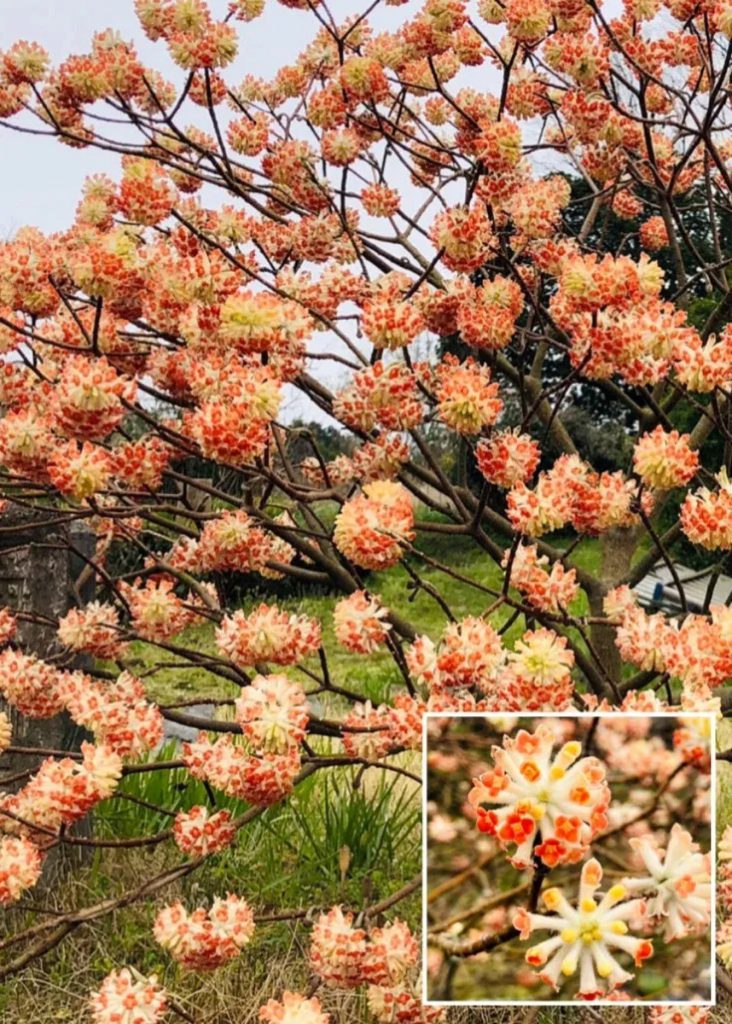
Mitsumata flowers are in bloom in the precincts of Tenryu-ji Temple in Arashiyama, Kyoto. It is one of the three raw materials for Japanese paper, along with ganpi and kouzo. The flowering season is March-April, and before the leaves come out, the yellow flower heads, which are a collection of spherical flowers, are attached to the tips of the branches and bloom downward to give off a sweet fragrance. While Western paper is made from wood pulp, which is made by crushing the trunk of a tree, Washi (Japanese paper) is characterized by using bark fibers. Washi has much longer fibers than Western paper, so it is thin, very sturdy, has a long life, and has a unique texture. Japanese banknotes are known around the world for their beauty and durability, and the material used for them is Washi. In addition, Washi is indispensable for the restoration of cultural properties around the world. Washi, which has been registered as a Nesco Intangible Cultural Heritage, is a product of Japanese traditional culture that is proud of to the world.
♭♭♭ 心模様 ♭♭♭
京都嵐山にある天龍寺境内に三叉の花が咲いています。雁皮や楮と並んで日本三大和紙原料の一つです。花期は3 – 4月で、葉が出る前に、花が球状に集まった黄色の頭花を枝先につけて、下向きに咲かせ甘い芳香を放ちます。洋紙が樹木の幹を砕いた木材パルプを原料としているのに対して、和紙は樹皮の繊維を利用するのが特徴です。和紙は洋紙に比べて格段に繊維が長いため、薄くてとても頑丈で寿命が長く、独特の風合いを持っています。日本の紙幣はその美しさと丈夫さで世界に知られていますが、その材料になっているのが和紙です。また、世界の文化財修復には和紙が欠かせません。ネスコ無形文化遺産にも登録された和紙は、世界に誇れる日本の伝統文化の産物です。
